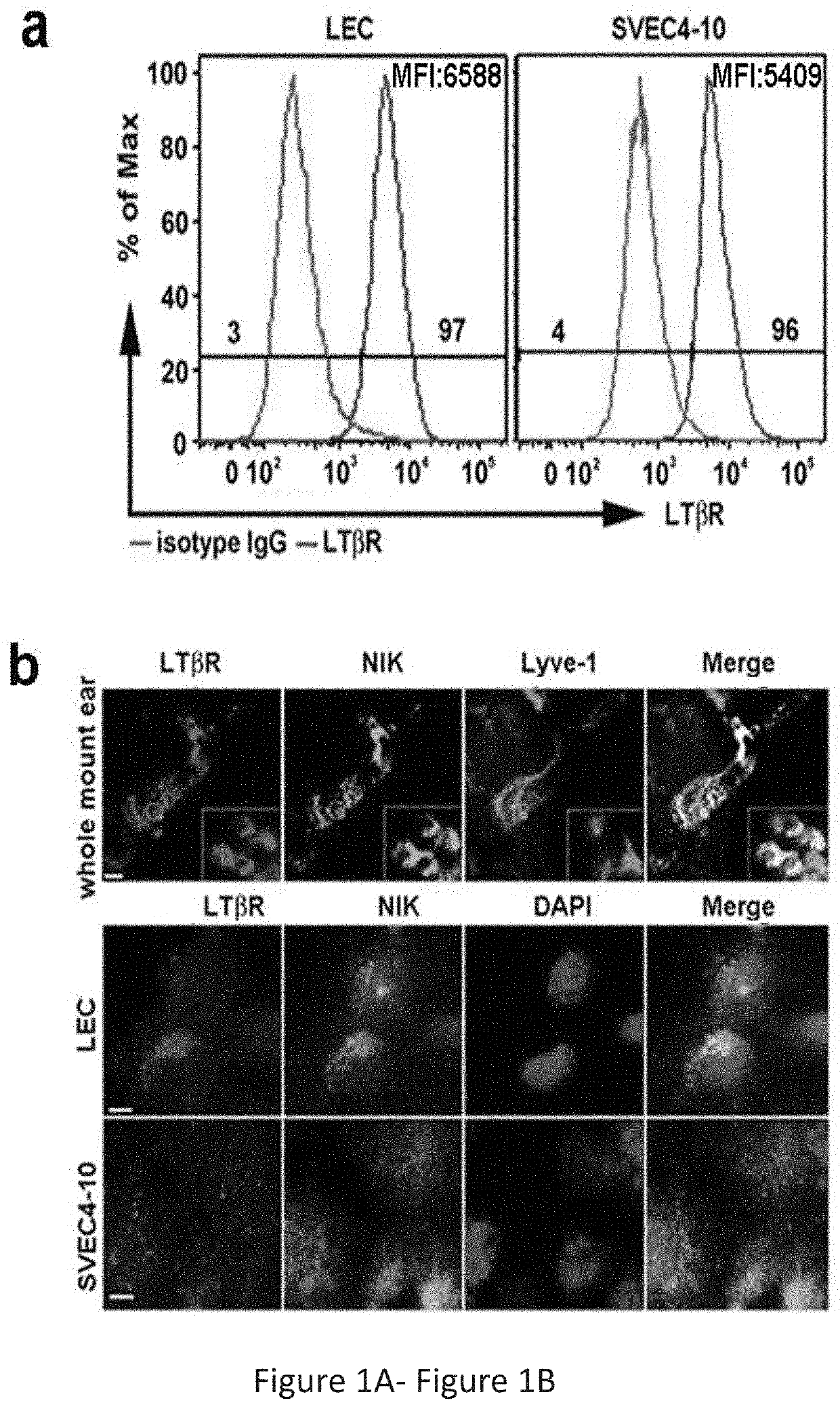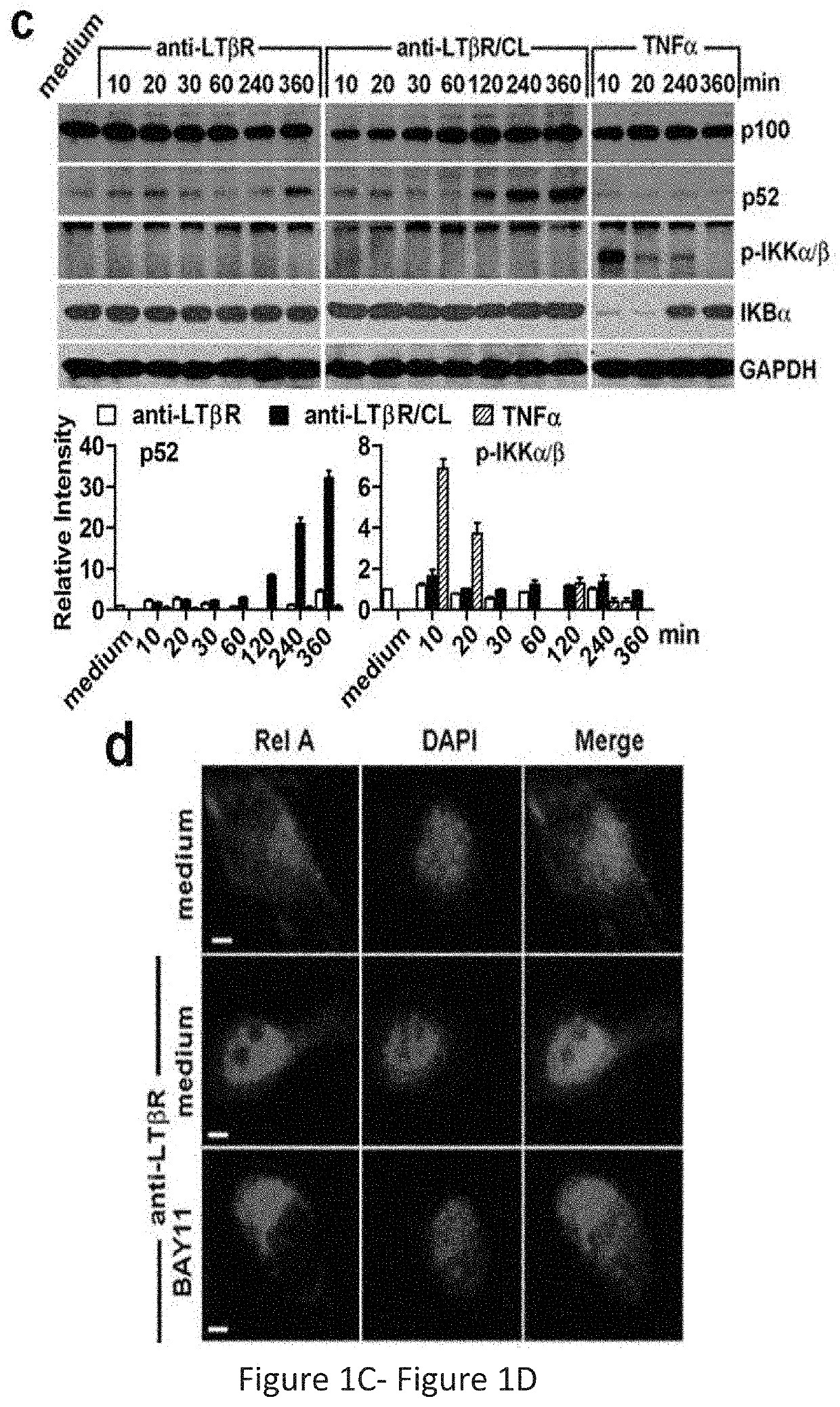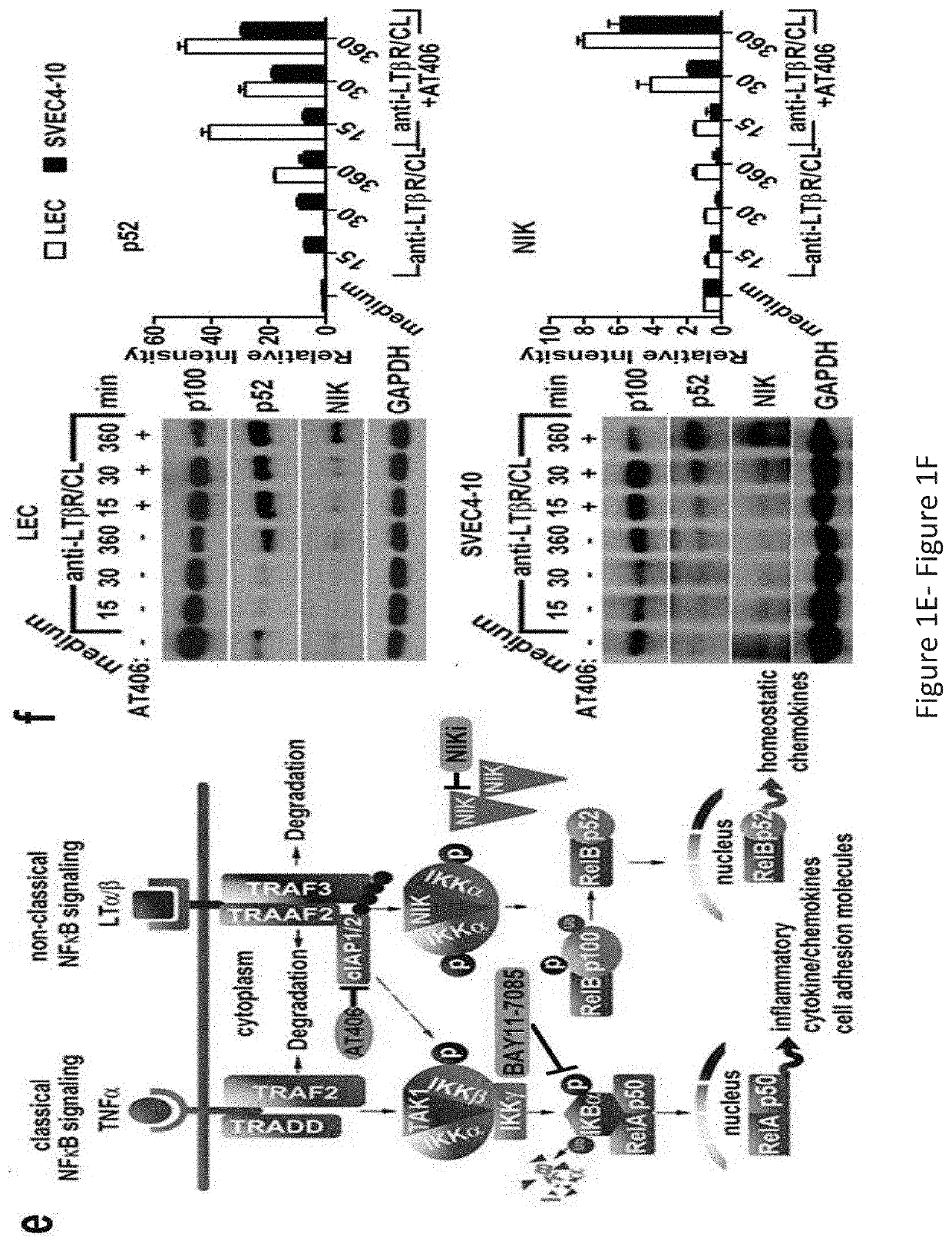Compositions and Methods for Treating Inflammation and Cancer
a technology applied in the field of compositions and methods for treating inflammation and cancer, can solve the problems of incongruity between disease models, inability to determine which ligands and signaling pathways are involved, and the regulation of t cell migration from tissues to lns via afferent lymphatics is not well defined, so as to inhibit cell motility
- Summary
- Abstract
- Description
- Claims
- Application Information
AI Technical Summary
Benefits of technology
Problems solved by technology
Method used
Image
Examples
experimental examples
[0253]The invention is further described in detail by reference to the following experimental examples. These examples are provided for purposes of illustration only, and are not intended to be limiting unless otherwise specified. Thus, the invention should in no way be construed as being limited to the following examples, but rather should be construed to encompass any and all variations which become evident as a result of the teaching provided herein.
[0254]Without further description, it is believed that one of ordinary skill in the art can, using the preceding description and the following illustrative examples, make and utilize the present invention and practice the claimed methods. The following working examples therefore are not to be construed as limiting in any way the remainder of the disclosure.
example 1
[0255]Stimulation of the Afferent LEC LTβR Preferentially Engages the NIK Pathway, Resulting in Changes in LEC Morphology, Structure, and Gene Expression, for Promoting Graft Tolerance and Reducing Inflammation
[0256]Experiments described herein were conducted using LTβR-specific cell permeable peptides targeted to the separate arms of the NF-κB pathway to reveal the molecular mechanisms of Treg migration, with an aim to develop therapeutic peptides to promote graft tolerance by avoiding unwanted immune responses. The results showed that stimulation of the afferent lymphatic endothelial cell (LEC) LTβR preferentially engages the NIK pathway, resulting in changes in LEC morphology, structure, and gene expression. These changes couple with T cell ligands and receptors to determine trans-endothelial migration (TEM) into the afferent lymphatics.
[0257]The materials and methods employed in these experiments are now described.
Animals and Cells
[0258]C57BL / 6 (WT, Ltα- / -) (7-10 weeks) were pur...
example 2
[0295]Treatment of Cancer Cells With the Novel Therapeutic Peptide nciLT Prevented Trans-Endothelial Migration (TEM) in vitro
[0296]The in vitro TEM assay described above was employed using cancer cells (FIG. 13) to determine whether the therapeutic peptides nciLT and / or ciLT could prevent cancer cell trans-endothelial migration in vitro.
Cancer Cell Migration In Vitro
[0297]Human or mouse cancer cell lines were stained with the dye CFSE, then treated with 20 μM control peptide, nciLT peptide, or ciLT peptide for 30 minutes without washing. The cells were allowed to migrate across human iLEC / iSVEC toward SIP or CXCL10 overnight. After the migration step, the cells which migrated into the lower (apical) chamber were counted using flow cytometry (FIG. 13). Abbreviations: Human iLEC-inverted human lymphatic endothelial cells; iSVEC-inverted mouse immortalized LEC line; SIP-sphingosine-1 phosphate.
nciLT Inhibited Cancer Cell Migration Through An Endothelial Cell Layer in vitro
[0298]To dete...
PUM
| Property | Measurement | Unit |
|---|---|---|
| Hypersensitivity | aaaaa | aaaaa |
Abstract
Description
Claims
Application Information
 Login to View More
Login to View More - R&D Engineer
- R&D Manager
- IP Professional
- Industry Leading Data Capabilities
- Powerful AI technology
- Patent DNA Extraction
Browse by: Latest US Patents, China's latest patents, Technical Efficacy Thesaurus, Application Domain, Technology Topic, Popular Technical Reports.
© 2024 PatSnap. All rights reserved.Legal|Privacy policy|Modern Slavery Act Transparency Statement|Sitemap|About US| Contact US: help@patsnap.com










